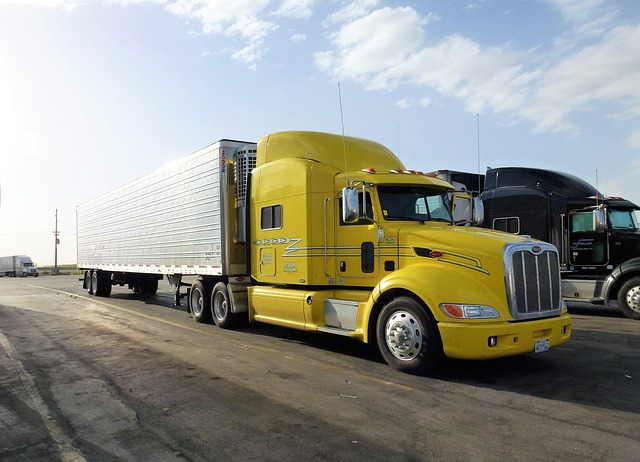Looking to register your car in California? This comprehensive guide breaks down the process, from understanding the DMV’s VIN verification to gathering essential documents. We walk you through each step, highlight common mistakes to avoid, and offer aftercare tips for maintaining your registered vehicle. By following these steps, ensuring a smooth registration experience is within reach.
- Understanding the DMV VIN Verification Process
- Gathering Necessary Documents for Car Registration
- Step-by-Step Guide to Registering Your Vehicle in California
- Common Mistakes to Avoid During Car Registration
- Aftercare and Maintaining Your Registered Vehicle in CA
Understanding the DMV VIN Verification Process

When registering a car in California, understanding the DMV’s Vehicle Identification Number (VIN) verification process is crucial. This involves submitting your vehicle’s unique VIN to ensure it matches the records maintained by the Department of Motor Vehicles (DMV). The VIN is a 17-character code that provides vital information about the vehicle’s history and specifications. A mobile vin verification or inspection, conducted by an authorized agent, plays a key role in this process as it allows for on-site validation, enhancing accuracy and streamlining registration.
During the DMV VIN verification, the inspector will cross-reference your car’s details—including its make, model, year, and other identifying features—with the information available through various databases. This rigorous check ensures that your vehicle is genuine, has not been reported stolen, and meets all necessary safety standards. By completing this step, you’re one step closer to legally registering your vehicle in California.
Gathering Necessary Documents for Car Registration

Before you begin the registration process, make sure you have all the essential documents ready. The California Department of Motor Vehicles (DMV) requires a variety of paperwork to verify your vehicle’s identity and your eligibility for registration. Key among these is the Vehicle Identification Number (VIN), which acts as a unique fingerprint for your car. Conducting a DMV VIN verification is crucial, as it ensures that the vehicle matches the details on file. This includes checking the vehicle’s history, ensuring there are no outstanding issues, and confirming the make, model, year, and other specifications.
Additionally, you’ll need proof of ownership, typically in the form of a title document, as well as valid identification documents like your driver’s license or state ID card. Other required items include insurance information, if applicable, and any relevant registration fees. For convenience, many individuals opt for a mobile VIN verification service to streamline the initial inspection process before visiting the DMV.
Step-by-Step Guide to Registering Your Vehicle in California

Registering a car in California involves several steps, but with proper preparation, it can be a straightforward process. First, gather all necessary documents, including your vehicle’s registration certificate from the previous state, proof of insurance, and a completed Application for Title and Registration (Form DVF 140). Next, visit a California Department of Motor Vehicles (DMV) office or use their online services to initiate the registration process.
One crucial step in the process is the DMV vin verification. This involves checking your vehicle’s unique identifier, known as the Vehicle Identification Number (VIN), which can be located on the driver’s side door frame or under the hood. You can facilitate this process with a mobile vin verifier or undergo a mobile vin inspection to ensure everything is in order before proceeding. Once all documents are verified and in place, you’ll receive your California vehicle registration and license plate, completing your vehicle’s official transition into California roads.
Common Mistakes to Avoid During Car Registration

When registering your car in California, it’s crucial to avoid common mistakes that can delay or even prevent the process. One major blunder is failing to conduct a proper DMV VIN verification. The Vehicle Identification Number (VIN) inspection is a critical step that ensures the vehicle’s history and authenticity. Make sure the title and registration match the VIN details.
Another frequent error is not having all the necessary documents ready, such as proof of insurance, a valid driver’s license, and the vehicle’s title. Even attempting mobile VIN verification or mobile vin inspection with untrustworthy services can lead to issues. Always opt for official channels and authorized personnel to avoid fraud and ensure a smooth registration experience.
Aftercare and Maintaining Your Registered Vehicle in CA

After successfully registering your vehicle with the California DMV, proper upkeep and maintenance are crucial to ensure a smooth ownership experience. Regularly scheduled servicing is essential for keeping your car in optimal condition. This includes timely oil changes, tire rotations, and other manufacturer-recommended maintenance tasks.
Additionally, keeping accurate records of all repairs, services, and inspections is vital. One convenient way to manage this is through mobile VIN inspection services, which allow you to verify your vehicle’s history and ensure it remains in compliance with California regulations. By leveraging these tools, you can streamline the process of tracking maintenance and quickly address any potential issues, ultimately contributing to a safer and more reliable driving experience.
Registering a car in California involves understanding the DMV’s VIN verification process, gathering essential documents, and following a step-by-step guide. By avoiding common mistakes and maintaining your vehicle post-registration, you’ll ensure a smooth experience. Remember to keep your documentation up-to-date and adhere to California’s regulations for a hassle-free journey on the state’s roads.
